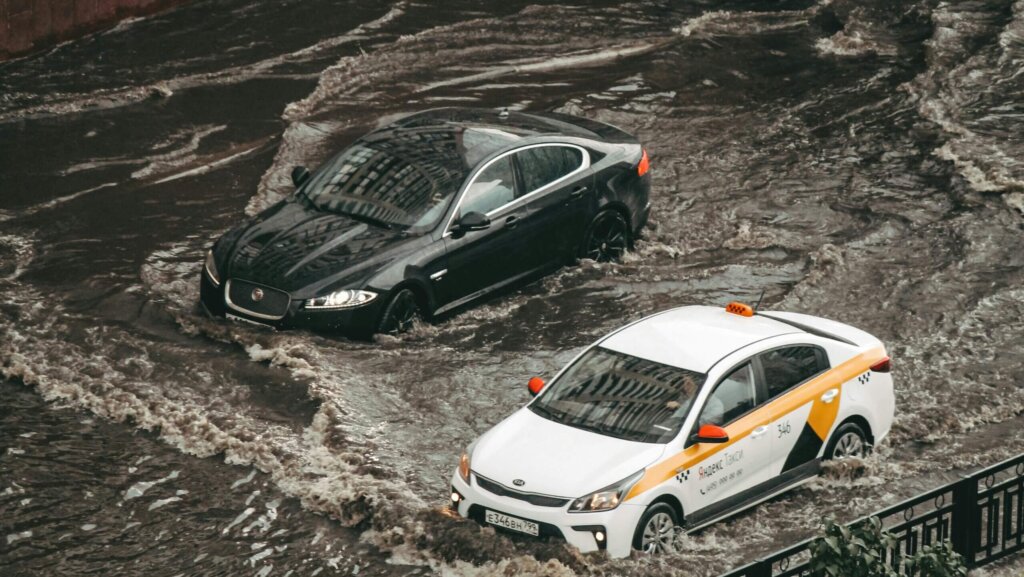Summary:
-
When flood season hits, vehicles submerged in water are auctioned off, presenting opportunities for buyers to save money on repairs and parts.
-
Flooded vehicles can be restored to a fraction of their original price, offering savings up to 70% on luxury or rare models.
-
Buyers need to carefully inspect for hidden damage, evaluate repair costs, and understand insurance and registration restrictions before purchasing a flooded vehicle.
When flood season hits, thousands of vehicles get submerged and written off by insurance companies. But for savvy buyers, these flooded vehicles for sale can present a tempting opportunity — if approached carefully. While flood damage can ruin a car, some vehicles are worth saving, especially if the damage is limited and the price is right.
In this article, we’ll break down what flooded vehicles are, why they’re sold, who should buy them, and how to spot a good (or bad) deal.
What Are Flooded Vehicles?
Flooded vehicles are cars, trucks, or motorcycles that have been exposed to significant water damage. This could mean being partially submerged, fully underwater, or sitting in floodwaters for hours or days. Insurance companies often total these vehicles due to the potential for hidden electrical and corrosion-related issues.
Once declared a total loss, these vehicles are auctioned off — usually with a salvage title indicating water damage.
Flooding can impact everything from wiring and sensors to engines, seats, and insulation. Depending on how long the vehicle sat in water and how high the water reached, the severity of damage can vary drastically.
Why Are Flooded Vehicles Sold?
Insurance companies sell flooded vehicles to recover part of the payout. Many of these cars go to public salvage auctions, where mechanics, flippers, and hobbyists buy them for repair or parts.
ADVERTISEMENT
While flood damage can be serious, not all water-affected cars are beyond saving. Some vehicles may only have wet carpets or minor electrical issues — especially if the water didn’t reach the engine or sensitive electronic components.
Why Buy a Flooded Vehicle?
1. Big Savings
Flooded vehicles are usually sold at a major discount — sometimes up to 70% off their pre-flood market value. If you’re mechanically inclined or don’t mind some repairs, the cost savings can be substantial.
2. Fix-and-Drive Potential
If the damage is cosmetic or limited to non-essential systems, a flooded car might be repairable for a fraction of its original price. Many buyers are surprised to find how repairable some flood cars really are.
3. Parts Value
Even if the vehicle can’t be restored, the undamaged parts (engine, wheels, interior, drivetrain) can be resold or reused. In fact, some buyers purchase flooded cars solely to part them out.
4. Learning Opportunity
Working on a flooded car is a great way for DIY mechanics to gain experience, especially with diagnostics, wiring repairs, and vehicle disassembly.
5. Rare or Expensive Models
Sometimes, luxury vehicles or rare trims end up at salvage auctions — presenting a unique opportunity for enthusiasts or rebuilders. You may not otherwise afford a BMW, Audi, or Lexus at these prices.
ADVERTISEMENT
Where to Find Flooded Vehicles for Sale
- Online salvage auto auctions
- Insurance auto auctions
- Towing yards and impound lots
- Junkyards or salvage dealers
- Flood recovery sales post-hurricane or storm season
Search with filters or keywords like “flood damage,” “water-damaged,” or “salvage flood title.” Reputable auction sites will provide VINs, damage reports, and plenty of photos.
What to Watch Out For
- Electrical System Damage: Corrosion and shorts in wiring harnesses, ECUs, sensors, and connectors can be hard to spot and costly to fix — often appearing months later.
- Engine Contamination: Water in the oil or cylinders can destroy an engine. Check for milky fluid or rust on internal components.
- Interior Mold or Odors: Flooded interiors can develop mold, rot, and lingering smells that are hard to remove — even after extensive cleaning.
- Rust and Corrosion: Look underneath the car and behind panels for signs of long-term exposure to water. Brake lines, fuel tanks, and suspension components are common trouble spots.
- Airbag System Damage: Moisture in airbag sensors or modules can prevent proper deployment, posing serious safety concerns.
How to Evaluate a Flooded Vehicle
- Check the Water Line: A visible watermark on the doors or inside the cabin can indicate how high the water reached.
- Inspect the Fluids: Milky oil or contaminated transmission fluid is a red flag.
- Smell the Interior: A musty or moldy odor signals trapped moisture and potential mold.
- Test the Electronics: Windows, lights, locks, infotainment, climate controls, and dashboard functions should all be tested.
- Review the Title: Most flood vehicles have branded salvage titles, limiting how and where they can be registered.
Who Should Buy a Flooded Vehicle?
- Experienced DIYers: Great for those who understand electrical systems and can disassemble interiors.
- Flippers and Rebuilders: If the numbers work and damage is limited, profit is possible.
- Parts Dealers: Flooded cars often have usable engines, transmissions, seats, and body panels.
- Collectors or Enthusiasts: Rare models can be worth restoring, especially if the drivetrain was untouched.
Tips for Buying Smart
- Ask for Documentation: Some auctions provide a flood report or history — always review it if available.
- Avoid Full Submersion: Stick to vehicles where the water stayed below the dash or electronics.
- Get a Professional Inspection: If you’re unsure, hire a mobile inspector who knows what to look for.
- Budget for Surprises: Flood damage is unpredictable — expect to find hidden corrosion or component failure.
- Check Title Laws: Some states prohibit retitling flood-damaged cars for road use.
Can You Register and Insure a Flooded Vehicle?
It depends on your state. In many places, a flooded vehicle can be retitled as “rebuilt” after repairs and inspections. However, some jurisdictions may permanently restrict them to “non-repairable” or “parts only” status.
Insurance Considerations:
- Liability insurance is typically available for rebuilt titles.
- Comprehensive and collision coverage may be limited or come at a higher premium.
- Some insurers will require extensive documentation or a professional appraisal.
Risks to Consider
- Invisible Electrical Damage: Even months later, corrosion can cause critical systems to fail.
- Persistent Odors and Mold: Interiors are difficult and expensive to fully dry and restore.
- Title and Resale Limits: Rebuilt flood cars have lower resale value and limited buyer interest.
- Financing and Coverage Restrictions: Some lenders and insurers won’t touch a flood-branded title.
Final Thoughts
Flooded vehicles for sale offer both risk and reward. For skilled buyers with realistic expectations, they can be a low-cost way to get into a project car, parts source, or even a running vehicle. But without proper inspection and repair knowledge, that “deal” could turn into a drain on your time and money.
Know the damage, check the title, and if you’re still confident — go in prepared. With the right approach, you might just rescue a great vehicle from a watery end and give it a second chance on the road.









